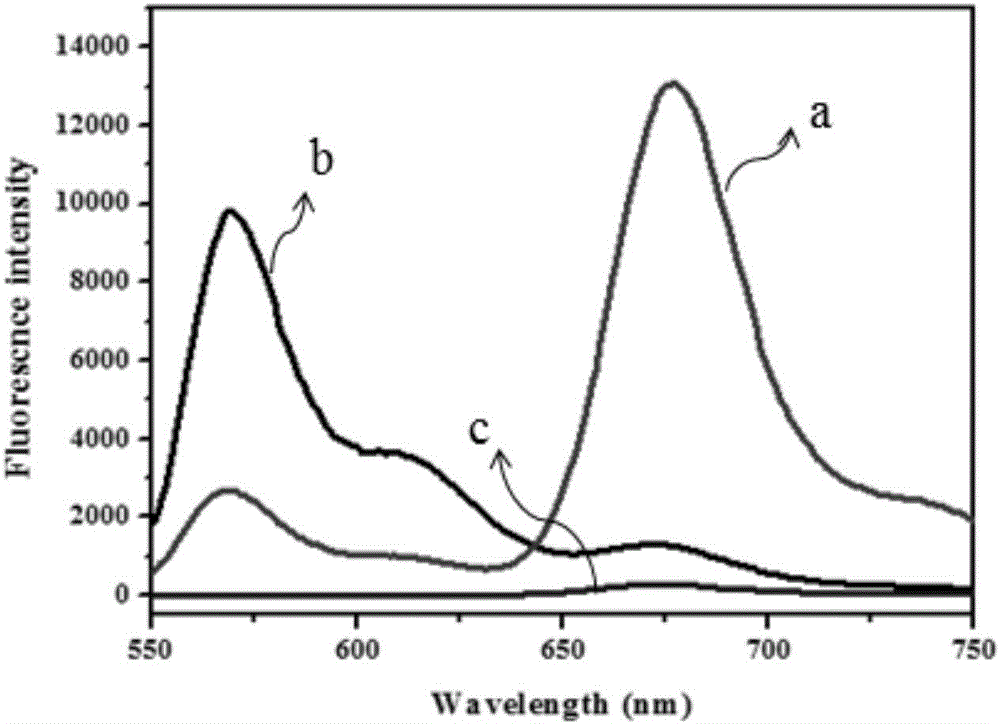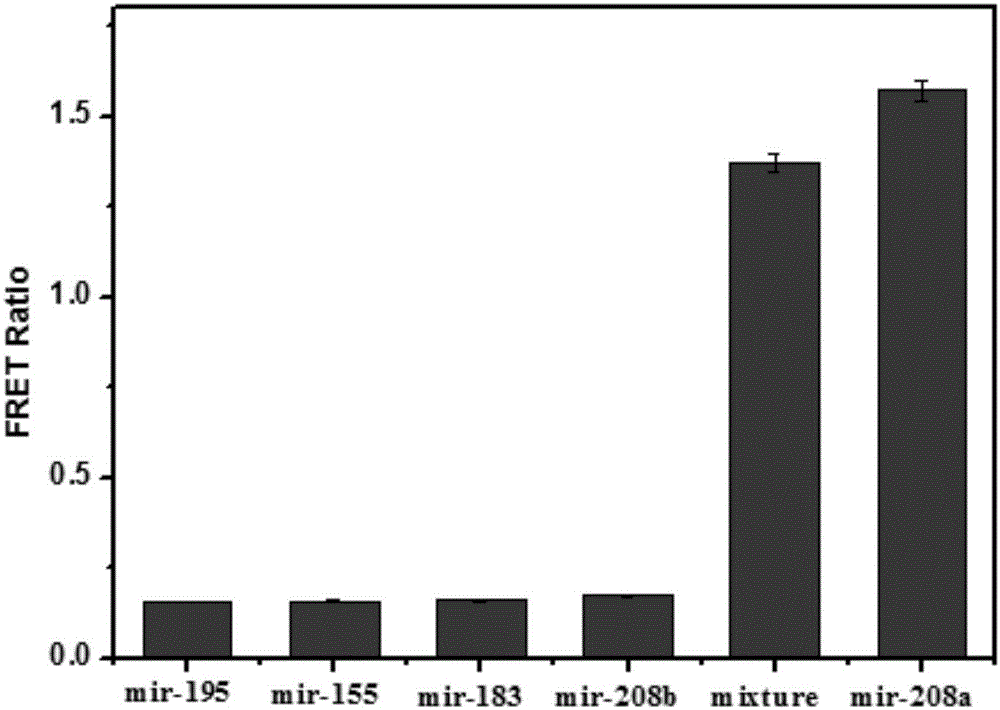Fluorescent resonance probe and application and kit thereof
A fluorescence resonance and fluorescent probe technology, applied in the field of biochemistry, can solve problems such as the inability to clearly distinguish the degree of base sequence differences, and achieve broad application prospects, market value, high specificity and sensitivity
- Summary
- Abstract
- Description
- Claims
- Application Information
AI Technical Summary
Problems solved by technology
Method used
Image
Examples
Embodiment 1
[0069] The fluorescence resonance probe provided in this embodiment includes a first fluorescent probe and a second fluorescent probe.
[0070] The first fluorescent probe has a first binding region and a first recognition region. The second fluorescent probe has a second binding region and a second recognition region.
[0071] The base sequence of the first binding area is reverse complementary to the base sequence of the second binding area, the end of the first binding area is marked with a first fluorescent group, and the end of the second binding area is marked with a second fluorescent gene.
[0072] The fluorescence spectrum of the first fluorescent gene overlaps with the excitation spectrum of the second fluorescent group. The first recognition region and the second recognition region are respectively reverse complementary to the adjacent first target region and second target region on the target nucleic acid fragment.
[0073] In this embodiment, the length of the f...
Embodiment 2
[0079] The structure of the fluorescence resonance probe provided in this example is basically the same as that in Example 1. The difference is: in this embodiment, the length of the first binding region is 8 bp, and the length of the second binding region is the same as that of the first binding region.
Embodiment 3
[0081] The structure of the fluorescence resonance probe provided in this example is basically the same as that in Example 1. The difference is: in this embodiment, the length of the first binding region is 9 bp, and the length of the second binding region is the same as that of the first binding region.
PUM
 Login to View More
Login to View More Abstract
Description
Claims
Application Information
 Login to View More
Login to View More - R&D
- Intellectual Property
- Life Sciences
- Materials
- Tech Scout
- Unparalleled Data Quality
- Higher Quality Content
- 60% Fewer Hallucinations
Browse by: Latest US Patents, China's latest patents, Technical Efficacy Thesaurus, Application Domain, Technology Topic, Popular Technical Reports.
© 2025 PatSnap. All rights reserved.Legal|Privacy policy|Modern Slavery Act Transparency Statement|Sitemap|About US| Contact US: help@patsnap.com



